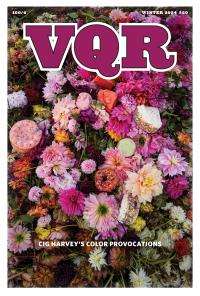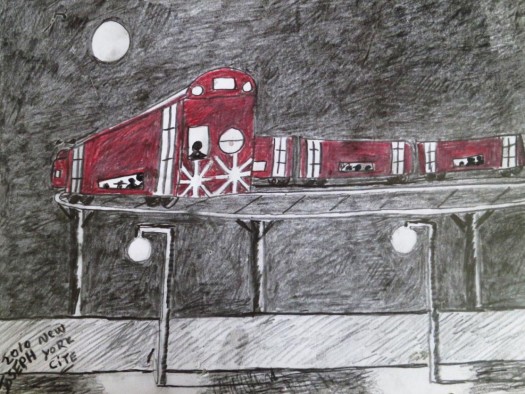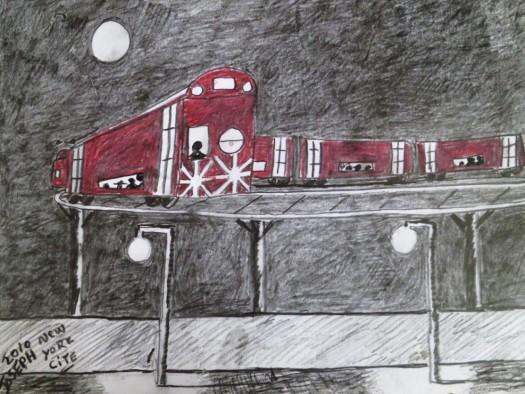
Subway Lifer


Editor’s note: The following post is the first in a series on living in New York.
I know New Yorkers who last took a subway in their twenties, thirty years ago, or who would rather be stuck in traffic any day than on an express train anyplace. Someday I, too, may know the luxury of a town car and driver or what it’s like to always take a taxi home. But until those hypothetical ships come in, all I can know is what I am now: a subway rider.
During my first year in New York, I took the A/C line to work each day. The West Fourth Street station was five minutes from my apartment. My favorite time was early morning. The station wasn’t crowded yet, riders weren’t rushed. People did not talk but read or listened to iPods. The smokers hacked their smokers’ coughs. Water drops—rusty tears in winter, I’d imagine, beads of sweat in summer—leaked from the steel I-beams overhead. The air was soft, as if unfinished dreams still emanated from everyone’s skin.
Waiting, however, can be a delicate business. Patience can turn to impatience in a flash and prompt a stance I’ve come to call the lean-and-look. This involves standing on the yellow strip at the edge of the platform, one foot firmly planted, the other extended back, and leaning out far enough (but not too far) to see if a subway is coming. It’s one step away from being either suicide or a minimalist dance move. One after the other, people would come forward and do it, myself included, as if collectively we could coax a train out of the tunnel.
Sometimes it actually worked and, on rare occasions, brought forth not one train but two: an A on the south side of the Fourth Street platform, a C on the other. At such moments one realizes that even the smallest choices matter. Both trains went to my stop at Fulton, but the A was an express and the C, a local, was poky. Each attracted different riders, different personalities. Which am I this morning, I would think, an A or a C? And what might happen in the extra minutes gained by the express? Will I bump into my next love as I exit or trip and break my leg?
On weekends, I tended to take the red line; a 1 stop was just down the street. I didn’t know many people here, which suited me fine. My primary relationship was with the city; we got to know each other via long subway rides—through Harlem and Washington Heights, Brooklyn and the Upper West Side. One night I ended up in Midtown at Lincoln Center. I stood for a long time in front of the Metropolitan Opera House, watching the luminous dance of the fountain at its entrance. I got a ticket, last minute, to an opera just about to begin. The lights dimmed and the crystal chandeliers made their silent retreat into the ceiling. I found myself shedding a few tears as the overture started. Did I wish there were someone with me? Perhaps. So I wasn’t shy about sharing my joy with others at intermission.
For some reason, there were no subway trains at Columbus Circle that night. I didn’t have money for a taxi, so I started walking. Eventually I stopped at the 50th Street station. It was empty save for a blind man tap, tap, tapping a jagged line on the platform. I watched him for a while, then, worried that he might fall to the tracks, steered him toward a back wall. We introduced ourselves; his name was Harold. It was past midnight and we were both going home—I to Christopher Street, Harold to 155th.
Now, I still didn’t know a lot about subway lines at the time but felt pretty sure that if Harold wanted 155th, he was headed the wrong way, and I gently told him so. He responded with a seeming non sequitur: “Sometimes, Billy, you have to go down to go up.” Just then a train came and we rode together to 42nd Street, where Harold got off and disappeared into a crowd. It was only then that I understood he hadn’t been dispensing sage advice about weathering the ups and downs of life in New York. The uptown station at 50th Street had merely been closed.
I am told by longtime New Yorkers that the subway used to be awful—garbage-strewn, graffiti-covered, suffocating in the summer, dangerous late at night all year-round. And of course I know plenty of people who despise taking it today, even though the cars are remarkably safe, clean, and cool. I suggest they ride with me. I cannot take a subway without marveling at the lottery logic that brings together a random sampling of humanity for one minute or two, testing us for kindness and compatibility. Is that not what civility is?
The other day, I was on a local 6 going uptown and seated next to a young woman with a baby in a stroller. At each stop, a man (always a man) would enter the car and end up standing right above us. I had my iPod on and was just watching. Inevitably, each man would make goofy faces and smile at the baby, and the baby would smile and make faces back. At each stop, the standing man would be replaced by a new one, straight out of central casting: First, an older Latin guy. Then he gets off and a young black man appears. Then a white man in a suit. Then a construction worker with a hardhat. Tough guys. New York guys. All devoted to one important task: making a baby smile.
I have other subway stories to tell: There’s the Weeping Man. The Moving Man. The Girl Who Wanted to be a Practical Thinker. And I could list more reasons why I like riding the 1, 2, 3, C, F, D, 4, 5, or L. But if pressed, I’d have to say that what I love most about the subways of New York is what they do not do. One may spend a lifetime looking back—whether regretfully or wistfully, with shame or fondness or sorrow—and thinking how, given the chance, things might have been done differently. But when you enter a subway car and the doors close, you have no choice but to give yourself over to where it is headed. The subway only goes one way: forward.
Read the next installment: The Thank-You Man
